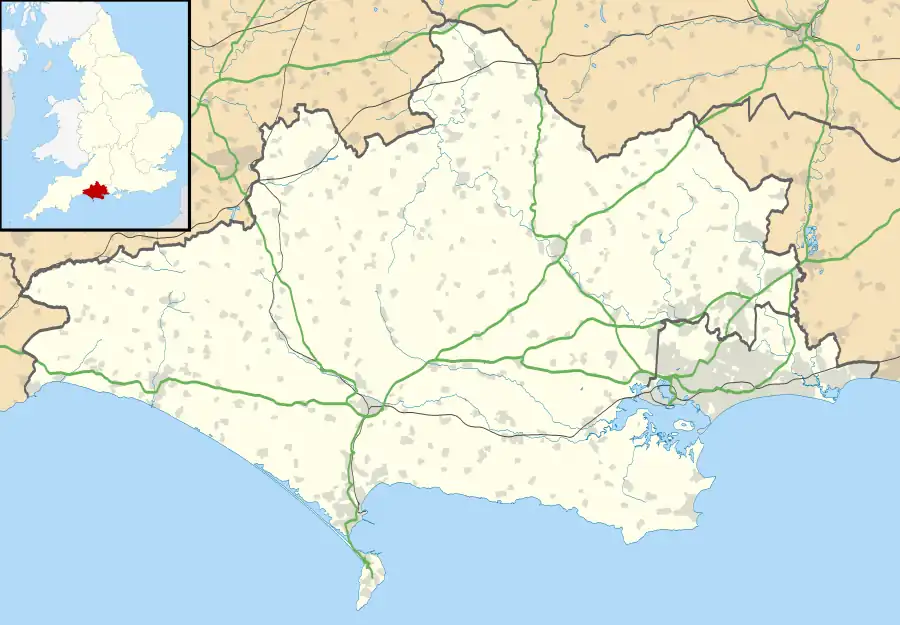West Knighton, Dorset
West Knighton is a village and civil parish in Dorset, England, situated 3 miles (4.8 km) southeast of the county town Dorchester. It has an 11th-century church and a village pub. In the 2011 census the civil parish had a population of 375.[1]
| West Knighton | |
|---|---|
 West Knighton | |
 West Knighton Location within Dorset | |
| Population | 375 [1] |
| OS grid reference | SY733875 |
| Unitary authority | |
| Shire county | |
| Region | |
| Country | England |
| Sovereign state | United Kingdom |
| Post town | Dorchester |
| Postcode district | DT2 |
| Police | Dorset |
| Fire | Dorset and Wiltshire |
| Ambulance | South Western |
| UK Parliament | |
The village name derives from the Old English cniht and tūn, meaning the village or farmstead of the young men or retainers.[2] At Little Mayne Farm 0.5 miles (0.80 km) southwest of the village is the site of a deserted medieval village, which was recorded in the Domesday Book as Maine[3] and in 1201 was known as Parva Maene.[4]
West Knighton parish historically developed out of the amalgamation of four medieval settlements within the ancient hundred of Cullifordtree:[5] the existing main village, the previously mentioned Parva Maene, another medieval settlement at Friarmayne to the south—also deserted and now within neighbouring Broadmayne civil parish[6]—and the fourth at Lewell to the north (now just a farmhouse).[7]
References
- "Area: West Knighton (Parish), Key Figures for 2011 Census: Key Statistics". Neighbourhood Statistics. Office for National Statistics. Retrieved 27 May 2014.
- David Mills, ed. (2011). A Dictionary of British Place Names. Oxford University Press. p. 281. ISBN 978-0-19-960908-6. Retrieved 27 May 2014.
- http://domesdaymap.co.uk/place/SY7286/mayne/ Open Domesday: Mayne
- West Dorset, Holiday and Tourist GUide. West Dorset District Council. c. 1982. p. 21.
- Open Domesday: Cullifordtree
- Ordnance Survey 1:25,000 map
- "'Knighton, West', An Inventory of the Historical Monuments in Dorset, Volume 2: South East (1970), pp. 135-140". British History Online. University of London & History of Parliament Trust. November 2013. Retrieved 28 May 2014.